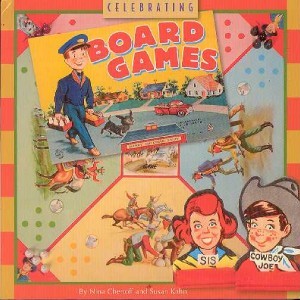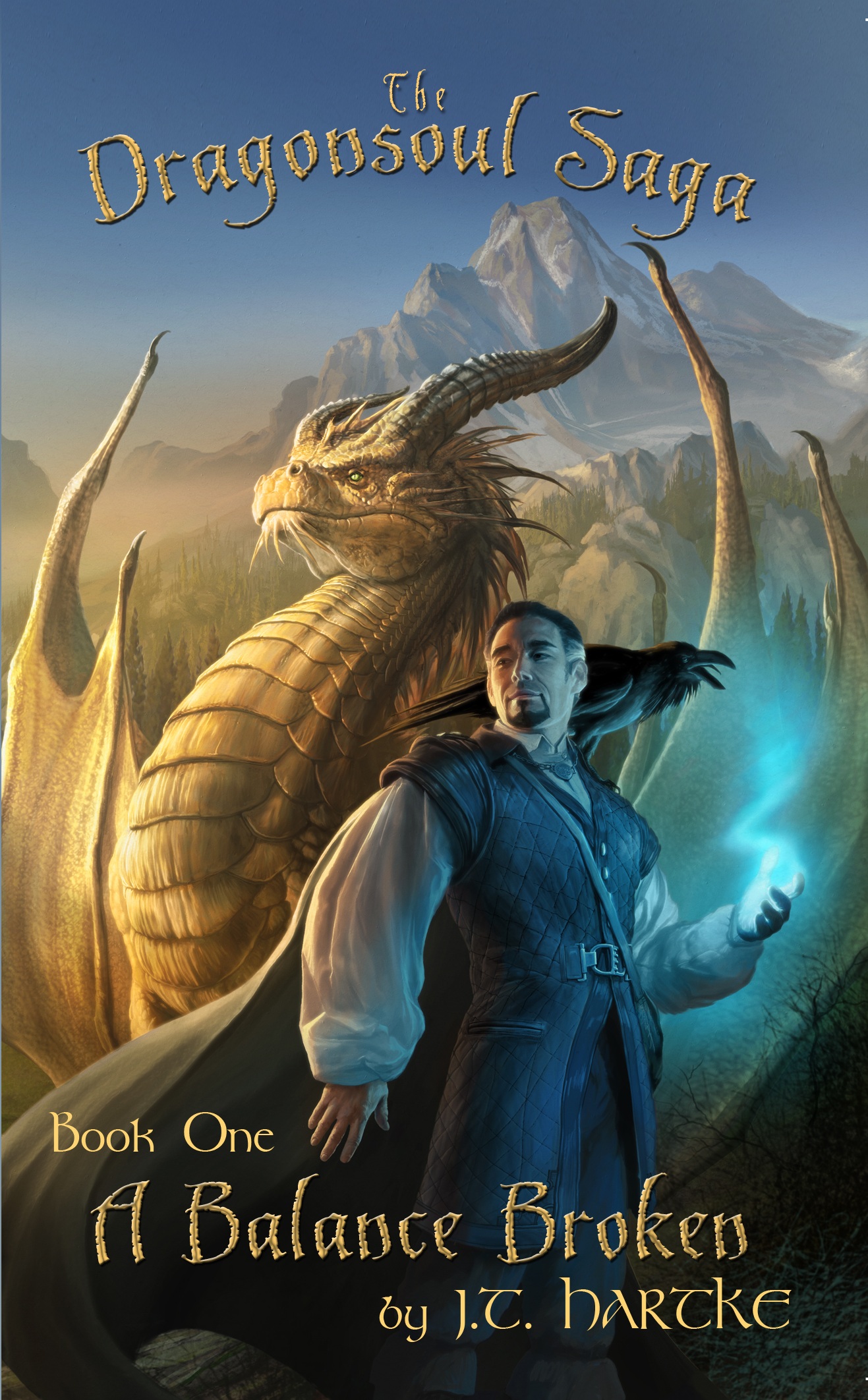Celebrating Board Games by Nina Chertoff and Susan Kahn
 Now out of print, Celebrating Board Games was originally part of a collection by Sterling Publishing that included Celebrating PEZ, Celebrating Snow Globes, and Celebrating Christmas Ornaments. Heavy on full color pictures but light on any substantial text, Celebrating Board Games’ most lengthy passage is the three-page introduction. Otherwise its authors simply present a board game with its name in bold lettering and provide a brief description of the game’s context, content, or advances. These descriptions can be maddeningly vague; the authors write “At right is the Game of Louisa, introduced in 1888 by McLoughlin Bros. It was a variation of Parcheesi. Its artwork is particularly noteworthy.” Why its artwork is just so noteworthy is not a topic that the authors care to discuss.
Now out of print, Celebrating Board Games was originally part of a collection by Sterling Publishing that included Celebrating PEZ, Celebrating Snow Globes, and Celebrating Christmas Ornaments. Heavy on full color pictures but light on any substantial text, Celebrating Board Games’ most lengthy passage is the three-page introduction. Otherwise its authors simply present a board game with its name in bold lettering and provide a brief description of the game’s context, content, or advances. These descriptions can be maddeningly vague; the authors write “At right is the Game of Louisa, introduced in 1888 by McLoughlin Bros. It was a variation of Parcheesi. Its artwork is particularly noteworthy.” Why its artwork is just so noteworthy is not a topic that the authors care to discuss.
To me the perfect recipient of Celebrating Board Games would be any nostalgic sort of adult who grew up in the 50s, 60s, and 70s, which is where the bulk of the book’s roughly 105 games are drawn from. If your mouth waters when you see advertisements in old magazines or recorded TV shows and you enjoy flipping through catalogues, then Celebrating Board Games is right for you. It originally retailed for $10, but can be found on the secondary market via resellers like eBay, Amazon, or used book stores.
Celebrating Board Games in the Classroom and as History
Chertoff and Kohn are also quick to point out games that are politically incorrect, such as the 1950s Cherry Ames’ Nursing Game, which is just on the wrong side of political correctness; a game card advises “Dr. Wylie said to Cherry, “Wipe that rouge off your face!” Move back 4 spaces.” What Shall I Be? from 1972 is more overt, offering girls only six career outlets it would seem, becoming either a ballerina, an airline hostess, an actresses, a nurse, a teacher, or a model. However it’s just these sorts of games in Celebrating Board Games that make it so worthwhile as a tool to get a glimpse into the past. As the authors write, “Our interests, our imagination, and our values are reflected in those simple boards and the pieces that move across them.” Part of those historical values is the role of race and the book features two racially charged games with the authors describing Little Black Sambo as “not only politically incorrect, but offensive.” The game Snake Eyes is subtler, but Chertoff and Kohn note that it “is another period piece that has racial graphics that are unacceptable today.” Even though there is little text in the book, it still might be helpful to teachers or students wanting to explore the pervasiveness of racism or sexism in the mid-20th century. Middle school and elementary school teachers will have a harder time making use of the book, but it is possible with greater supervision.
Fantasy Gaming History via Celebrating Board Games
While almost every board game could be considered a fantasy game in which one has to use one’s imagination, what really caught my eye in Celebrating Board Games was the emergence of representational military and fantasy games. Milton Bradley’s Siege stands out for its inclusion of a plastic castle out of scale with the game’s nine plastic miniatures: four mounted knights and five footmen. 1977’s Carrier Strike featured aircraft carrier models battling over a hex grid with torpedo dive bombers. From the picture, it looks like the torpedos might detach from the plane carrying them, which would be a neat mechanic. The Lord of the Rings Adventure Game makes use of cardboard playing pieces to represent the Fellowship and the Naz-Gul and represents Rivendell, the Mines of Moria, the Black Gate, and Mt. Doom on its board and takes it artwork from the Ralph Bakshi animated film. John Hill’s Panzerforce makes an appearance with its six HO scale plastic tanks, though the box art’s boast of its “18” x 30″ Full Color Realistic Game Board” seems laughable given how poorly drawn it appears using today’s standards.
If a certain theme begins to emerge in the book, it’s that Milton Bradley sure had a good design team that enjoyed playing with little toy soldiers as 1981’s Dark Tower reveals. It was fairly novel in that it featured electronics with a keypad built into the physical model of the Dark Tower at the center of the game. The game also came with plastic knights, a dragon, and various buildings. Milton Bradley’s contributions to gaming in the book really culminate with Broadsides & Boarding Parties, which the authors note as having a board that “is beautifully designed”, which is almost meaningless to me compared to the glorious shot of the miniature pirate ship with about two dozen sailors on it and something like eight separate cannon as well. It came with two of the awesome ships and was part of the same Gamemaster Series that brought us Shogun, Axis & Allies, and Fortress America.
Tony Elam’s Role on Celebrating Board Games
At the end of the 144 page book, the authors thank Tony Elam for allowing them to photograph his collection of board games and “graciously providing us with so much fascinating information about their history.” At the time of publication in 2006, Elam was the Director of Games in Education for GAMA (Game Manufacturers Association) and the Associate Dean of Engineering at Rice University in Houston. I had more luck in tracking Elam down than I did the book’s authors and asked him if he had any of the interior photographs and whether he could provide any additional information on the book.
Elam was able to help with the latter part, since, according to him, he
came up with most of the book’s content. The authors, Elam says, “tweaked” the introduction he wrote a “little bit” before including it. As for the book’s actual composition, a photographer and a graphic designer came out to his home in Houston and spent three days photographing his collection with great visual results. As each game was covered, Elam was questioned about it and according to him, he even wound up editing and correcting the brief synopses. Elam is “very pleased” though with the end result and I have to agree with him that the book is a “nice little set of photos”. Some of Elam’s personal favorites from his collection now numbering around 7,500 games that didn’t find their way into the book are Hero Quest and Space Crusade. Besides filling his home with his games, he also has two climate-controlled storage units for his hobby. The crown jewel of his collection is a British kriegspiel game from the 1800s, complete with wooden case and ivory or bone measuring instruments. He came across Settlers of Catan fairly early compared to other Americans in 1996 which started him on Euro games. While Elam has since left GAMA, he has close connections to the Strong National Museum of Play in Rochester, NY, sits on the National Toy Hall of Fame board, and dabbles in games for serious applications like business or medicine with the Houston Serious Games Research Consortium.
Games Photographed in Celebrating Board Games In Order of Appearance:
Grandma’s Game of Riddles, Uncle Wiggily, Rudolph the Red-nosed Reindeer, Old Maid, Standard Authors, Logomachy, Komical Konversation Kards, Grandma’s Game of Riddles (again), The Game of Snap, Game of Louisa, Pollyanna, Eddie Cantor’s Game, Clipper Race, Monopoly, Cargoes, Finance, Bulls and Bears, Pirate and Traveler, Parcheesi, The Lone Ranger, Bizerte Gertie, Gusher, Little Black Sambo, Touring, Rudolph the Red-nosed Reindeer (again), Snake Eyes, Calling All Cars, Clue, Cootie, Lobby, Uncle Wiggily (again), Hopalong Cassidy Game, Park and Shop, Police Patrol, Stadium Checkers, Astron, Dunce, Frontierland Game, Merry Milkmen, Prince Valiant, Old Maid (again), Rin-Tin-Tin, Walt Disney’s Tomorrowland Rocket to the Moon Game, Walt Disney’s Fantasyland Game, Trapped!, Around the World in 80 Days, Fearless Fireman, Thrills ‘n’ Spills, Walt Disney’s Sleeping Beauty Game, Star Reporter, Alfred Hitchcock Presents WHY, Casper the Friendly Ghost Game, Have Gun Will Travel, Cherry Ames’ Nursing Game, Risk!, Steve Canyon, Go to the Head of the Class, The Game of Life, Camelot, Tally Ho!, Lucky Loopy, Combat!, Sorry!, Camp Granada, The Man from U.N.C.L.E., chess set featuring Napoleon, Siege, Fu Manchu’s Hidden Hoard, Regatta, Kreskin’s ESP, Dominoes, Masterpiece: The Art Auction Game, The Godfather Game, the Pincchio Game, Ouija, Hare and Tortoise, What Shall I Be?, Checkers, Chinese Checkers, Creature Features, Cracker Jack, Carrier Strike!, The Lord of the Rings Adventure Game, Panzerforce, Winnie the Pooh, The Mad Magazine Game, Candyland, Dark Tower, Broadsides & Boarding Parties, Barnum’s Animal Crackers Game, Looping Louie, Wadjet, Elvis, Nyout, Aeronautika, Mississippi Queen, Dinosaurier, Clue (Simpsons version), TurfMaster, Can’t Stop, Battle Cry, MotorChamp, Hamster Rolle, Monopoly (different versions), Mall of Horror, Niagara, Cash ‘n Guns, Parcheesi (another version), Villa Paletti



Pingback:Craven Games Reviews Celebrating Board Games Book